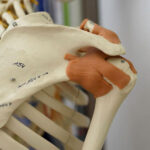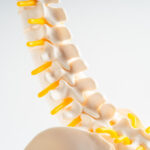Stem Cell Therapy in Texas
Are you a Candidate for treatment?
Are you a Candidate?
Discover if you are candidate for treatment, get in touch with our team to start with a consultation.
Texas Regenerative Medicine
by Renowned Neurosurgeon Dr. Baker
Understanding Stem Cell Therapy in Texas
Texas regenerative medicine is at the forefront of employing stem cell therapy, a revolutionary approach to healing and restoration. Stem cells, the body's fundamental building blocks, can differentiate into various cell types, offering immense potential in treating a plethora of conditions.
Stem Cell Therapy: A Closer Look
Stem cell therapy, a transformative branch of medical science, is pivotal in the realm of regenerative medicine, offering novel solutions for a myriad of health issues.
Stem cells, characterized by their ability to self-renew and differentiate into various cell types, serve as the foundation for this therapy.
They can be harvested from sources like bone marrow, adipose tissue, or peripheral blood, each offering unique advantages in therapy.
Medical Science and Stem Cell Research
The scientific community has dedicated extensive research to understanding stem cells' mechanisms and potential applications. Studies demonstrate that when these cells are introduced into damaged tissues, they can promote repair and regeneration, offering hope for conditions that were once deemed irreversible. This research has led to groundbreaking treatments for conditions like osteoarthritis, heart disease, and neurodegenerative disorders.
Stem Cells in the Human Body
In the human body, stem cells are integral to growth, development, and healing. They reside in various tissues, waiting to be activated to repair damage or maintain tissue homeostasis. Their unique ability to transform into the required cell types makes them invaluable in medical treatments.
Importance of Stem Cells in Medicine
The significance of stem cells in medicine cannot be overstated. They offer a pathway to treat diseases by regenerating damaged tissues, reducing dependency on conventional treatments like surgery or long-term medication. As research progresses, the potential applications of stem cells in medicine continue to expand, promising a new era of treatment options.
The Role of Mesenchymal Stem Cells
Mesenchymal stem cells (MSCs) are renowned for their robust regenerative capabilities and are a focal point in stem cell therapy.
These cells, found in bone marrow, adipose tissue, and even umbilical cord blood, can differentiate into a variety of cell types, including osteoblasts, chondrocytes, and myocytes, essential for bone, cartilage, and muscle repair.
MSCs in Tissue Repair and Inflammation
MSCs are particularly lauded for their role in tissue repair and anti-inflammatory effects. They can modulate the immune system, reducing inflammation, a critical factor in the healing process.
This immunomodulatory ability, coupled with their regenerative potential, makes MSCs a powerful tool in treating autoimmune diseases, injuries, and in promoting recovery post-surgery.
Clinical Applications and Research
Clinical trials and studies continue to unveil the versatility of MSCs in treating various conditions.
From repairing cartilage damage in osteoarthritis to aiding recovery in myocardial infarction, MSCs have shown promise in improving patients' quality of life.
Researchers are also exploring their potential in combating chronic diseases, such as diabetes and multiple sclerosis, by harnessing their ability to induce tissue regeneration and modulate immune responses.
Future Directions in MSC Therapy
The future of MSC therapy is bright, with ongoing research aimed at enhancing their therapeutic efficacy and understanding their mechanisms of action.
Scientists are developing innovative methods to optimize MSC delivery, improve cell survival post-transplantation, and tailor treatments to individual patient needs.
As this field evolves, MSCs are set to play a crucial role in advancing personalized medicine, offering more targeted, effective, and holistic treatment solutions.
Harnessing Platelet Rich Plasma (PRP)
Alongside stem cell therapy, platelet-rich plasma (PRP) is a key component in regenerative medicine. By concentrating platelets from your own blood, PRP therapy enhances the body's natural healing process, especially in joints, tendons, and ligaments.
Advanced Therapies for Improved Joint Function
The realm of regenerative medicine has introduced advanced therapies, notably stem cell and Platelet-Rich Plasma (PRP) treatments, as revolutionary options for enhancing joint function and mitigating pain.
Unlike traditional treatments that often focus on symptom management, these regenerative therapies aim to address the underlying causes of joint issues by fostering the natural regeneration of damaged tissues.
 Ankle and foot joints, bearing the body's weight, can suffer from conditions like plantar fasciitis or arthritis.
Ankle and foot joints, bearing the body's weight, can suffer from conditions like plantar fasciitis or arthritis.
Regenerative therapies can help repair damaged tissues, reduce inflammation, and improve overall joint function, potentially allowing individuals to regain mobility and enjoy a pain-free life.
For the elbow, conditions such as tennis elbow or golfer's elbow, stem cell, and PRP therapies can promote the healing of tendons, reduce inflammation, and restore joint function, offering a non-surgical solution to chronic elbow pain.
Similarly, the hip joint, prone to degenerative diseases like arthritis, can benefit immensely from these therapies. Stem cell injections into the hip can help regenerate the cartilage lining, reduce bone-on-bone friction, and promote pain relief, improving mobility and quality of life.
Stem cell therapy for the knee, often damaged by conditions like osteoarthritis or injuries, can significantly improve joint function and alleviate pain.
Injecting stem cells into the knee can stimulate the repair of cartilage, enhance the production of synovial fluid, and reduce inflammation, offering a potential alternative to knee replacement surgery.
 The shoulder joint, with its complex structure, is susceptible to various injuries and degenerative conditions.
The shoulder joint, with its complex structure, is susceptible to various injuries and degenerative conditions.
Regenerative therapies can aid in the repair of the rotator cuff, alleviate shoulder impingement, and treat arthritis, potentially avoiding invasive surgeries like arthroscopy or shoulder replacement.
 Particularly notable is the application of these therapies for spinal discs, where degeneration or herniation can cause significant pain and disability.
Particularly notable is the application of these therapies for spinal discs, where degeneration or herniation can cause significant pain and disability.
Stem cell and PRP therapies can promote the regeneration of disc tissue, reduce inflammation, and alleviate pain, offering a promising alternative to spinal fusion or disc replacement surgeries.
By targeting the intervertebral discs, these therapies aim to restore disc height, improve spinal alignment, and enhance flexibility and mobility. As a neurosurgeon and spinal surgeon with years of experience, Dr. Baker has the unique knowledge encompassing spinal disc injuries and conditions that can be treated with revolutionary stem cell therapy.
Wrist and hand joints, essential for daily activities, when affected by arthritis or repetitive strain injuries, can see improved function and pain reduction through regenerative therapies. These treatments can aid in the healing of small ligaments and tendons, reducing inflammation and improving strength and flexibility.
Local Anesthetic and Patient Comfort
To ensure patient comfort, treatments are typically administered under local anesthetic. This approach minimizes discomfort, allowing patients to undergo these transformative therapies in a pain-free manner.
A Patient-Centric Approach
In Texas regenerative medicine, the patient's well-being is paramount. Each treatment is tailored to the individual's needs, considering their specific condition and the body's natural healing capabilities. This patient-centric approach underlines the commitment to providing personalized, effective care.
The Future of Regenerative Medicine
As research progresses, the potential of stem cell therapy continues to expand, offering new hope in conditions previously deemed untreatable. With each advancement, Texas regenerative medicine is setting new standards in health and healing, demonstrating the power of the body to regenerate and repair.
